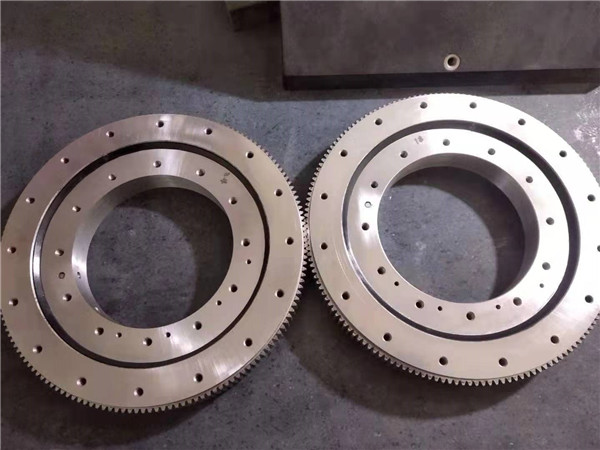What is the difference between single row ball slewing bearing domestic and overseas?
Slewing bearing is very popular both in China and abroad, especially in Germany, France, the United States and Britain is a major manufacturer of slewing bearing of single Chinese slewing bearing single appeared in the early 20th century in the early 1980 s, using the German technology and combining with the domestic technology, formed the slewing bearing of single bearing technology, however, compared with abroad, is still a big gap between product quality and level of The following is a comparison of single ball slewing bearing from four aspects domestic and overseas
1.Design Technology
Foreign only need to input in the computer such as working conditions, installation size, speed and other data, such as CAD program automatically complete product structure design, loading capacity calculation, and the output of various shapes and curves at the same time, and using finite element analysis of slewing bearing load simulation analysis and single foreign company’s new products emerge in endlessly, at least a dozen, but in China is less than 10, so every year there are many special requirements,single row ball slewing bearing need to be imported from abroad
2. Technology
Slewing bearing manufacturer abroad single CNC machine tool has been widely used for processing and it has the advantage of greatly simplifies the process, reduce the frequency of the workpiece clamping, avoid the processing and the measurement error, greatly shorten the production cycle, and to ensure that the internal and external assembly, at the same time improve the quality of the product percent of pass due to the use of the nc machine tool, it provides conditions for the scene to realize the drawing operations from product contract to product design (CAD), process design (CAPP) and CNC machine design, the computer system can be connected to the whole operation process is very efficientAnother foreign manufacturer has many unique features for single volley type rotary bearings in heat treatment, roll rolling and other processes
3. Test technology
The design of the single ball slewing bearing is inspired by a large number of long-term experiments and practices, so the experimental equipment and methods have attracted wide attention.For this, lack of in-depth research and implementation, should gradually improve the life test, temperature test, bolt strength test, gear strength test equipment.
4. Quality control
There is still a large gap between domestic production plants and international standards.There are almost no full-time inspectors in foreign production workshops, but all kinds of inspection data are accurate and reliable, and transmitted timely.We do not have a lot of advanced testing equipment, such as nondestructive testing, coordinate measurement, so the domestic quality control level is low.
A single row ball slewing support is often referred to as the connecting part of a machine tool.This is an essential transport link for the machine.The macros of a single row ball slewing support are called supports.Support parts are commonly used as basic tools for CNC machines, including rocker arms and turret.And the bed, and the beam, and the elevator.
One of the supports is called the auxiliary support.Auxiliary supports certainly play a role in limiting the degree of freedom in increasing the stiffness of the workpiece.In fact, the two meanings play the same role: to achieve and improve machining accuracy and efficiency through machining, corresponding to the different installation methods of single volleyball slewing bearing. When constraints are applied, the inner ring can be all or all of the constraints.The constraint is applied to the outer surface of the outer ring
The Mises stress of the elliptical raceway is less than that of the circular raceway, that is to say, the bearing capacity of the single volleyball slewing bearing is better than that of the single volleyball raceway bearing.Single volleyball slewing supports, these components are relatively large in size, so they are also known as large single volleyball slewing supports, which can withstand the combined load of large bearings.The latter can withstand greater axial loads, radial loads and sloping turning moments.In order to ensure the normal and stable operation of the equipment, the large bearing is of closed construction, so that the true function of the bearing can only be seen when the top of the heavy structure is lifted to a certain height.









